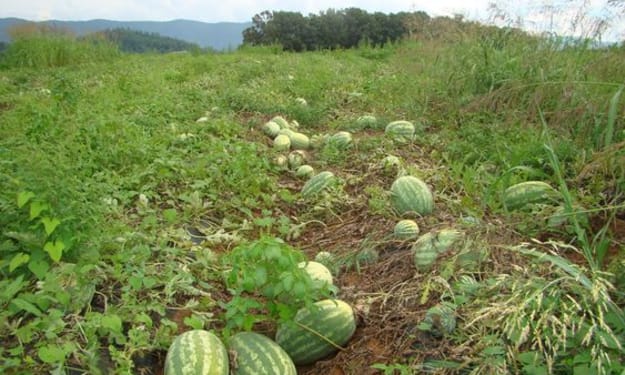Tips to Grow a Good Garden
A homeowner’s guide to keeping your garden healthy and thriving.

Maybe you’re a first-timer who’s just recently developed a passion for gardening, or you’re an enthusiast who’s been gardening for years and just are looking for more ways to be better. Here is a helpful list of things you can do to start or continue digging and growing your piece of paradise here on Earth.
Soil Matters
- Avoid applying fresh manure into your soil because this has a nitrogen content so high it can “burn” plants, and may also have pathogens and/or parasites. The manure of domesticated animals such as dogs, cats, and pigs could possibly have infectious parasites as well, hence shouldn’t be laid onto your yard’s soil. Wait for the manure to rot and compost for at least six months before putting it in soil.
- Contrary to popular belief, fertilizer isn’t the solution to growing the healthiest plants - good quality soil is! Organic supplements, like compost and seasoned manure, should be added to enhance the quality of your soil. If your soil is crumbly, easily diggable, water-absorbent, and loose enough to provide oxygen for roots, then you will know you’re doing a good job in maintaining it. If you do use fertilizer, better opt for organic ones and then add nitrogen, phosphate and a potassium-related element called potash.
- To avoid damaging soil structure, don’t dig or plant when the soil is wet. Wait for the soil to turn crumbly. If it forms into a ball when you squeeze some in your hand, it’s not yet a good time to till.
- Because roots require a good amount of oxygen, your soil shouldn’t be wet always. This will not let air pockets exist, and these are needed so that roots will thrive. Study your soil drainage, see if your plants prefer well-drained soil and improve your soil accordingly by remedying it with organic materials as mentioned above.
- Remember that the abundant presence of earthworms, microbes and other organisms mean your garden soil is healthy. Good tilth or well cultivated land produces lively garden plants that are resilient against pests and diseases.
Water is Life
One to two inches of water per week is the advised amount for the hearty growth of most in-ground garden plants. It could help that you can request your local plumber to strategize a water source like your sprinklers or hose to be nearby to your garden for easy water access. Instead of daily light watering, it would be better to water deeply once a week if no rain falls enough. Frequent shallow watering will only moisten the soil’s upper layer, attracting the roots to go up instead of growing down and deeper.
One of the most common rookie mistakes is watering all over the leaves, which isn’t actually helpful, and can even cause plants to become more prone to diseases. Make sure to water the soil and not just the leaves. And to reiterate what was mentioned above, water enough and not too much. An urban gardener and blogger in Houston by the name of Timothy Hammond says that “the easiest trick is to water a container or a garden bed until you can count to three seconds with the water still pooled on top”, meaning water has been adequately absorbed by the soil down to its roots.
To sustain against moisture loss, powdery mildew and fungal diseases that proliferated due to high levels of humidity, make it a habit to water your garden early in the morning.
Let there be Light
- Various plants require different amounts of lights and this is something you should consider, as well. Most vegetables demand the full heat of the sun to create a good harvest, so grow your vegetables somewhere that gets eight hours a day at least. Some cool-season crops, like cabbages, radishes, spinach and lettuce, can flourish in the shade.
- Moreover, lead horticulturist at Burpee Venelin Dimitrov remarks, “For edible, rule number one is you need full sun.” That means you need to pay attention where the sun goes most of the day taking into account your current location. When you find out the answer to that, then you will know where you’ll need to put your edible garden.
Other Reminders
- Hand-weeding and hoeing are the best approaches when it comes to dealing with weeds. Deep cultivating brings weed seeds to the surface where they can germinate, so that’s obviously not a good idea. Don’t wait for the weeds to seed by taking them out early and often. You can use mulch to overpower perennial weeds.
- Fallen leaves are perfect ingredients for good compost. Leaves that have been pulverized can be left to nourish the lawn. 3-6 inches of shredded leaves can be utilised as mulch to keep tender perennials dormant over winter. And when spring arrives, just remove the mulch.
With these tips in mind, gardening will be much easier and hopefully, more fulfilling. Create the perfect turf to your heart’s desire! And if you need professional help, don’t hesitate to reach out to the experts.
About the Creator
Florabel Duran
I'm Florabel, Data Analyst, Researcher, and SEO Outreach at Fast Forward Search, LLC. We published blogs about pest control and plumbing content. I've been enjoying this and it becomes an interest in this small interesting important topic.






Comments
There are no comments for this story
Be the first to respond and start the conversation.